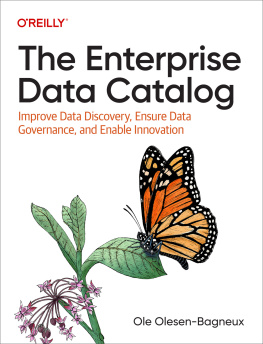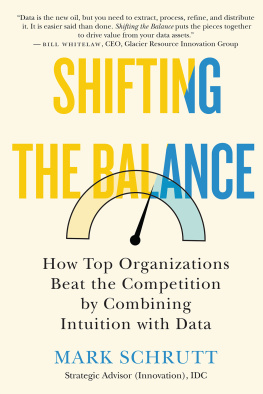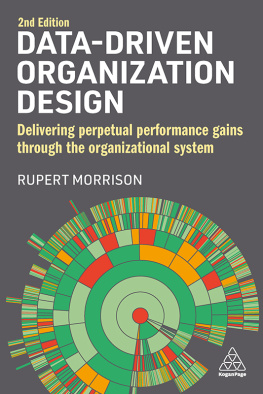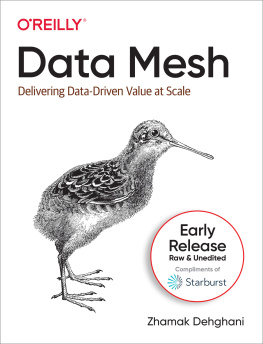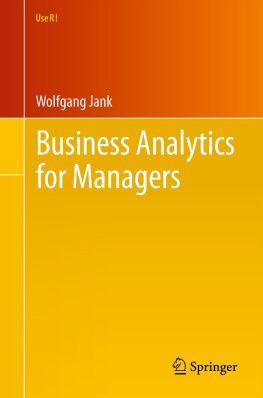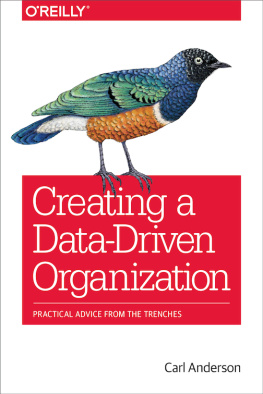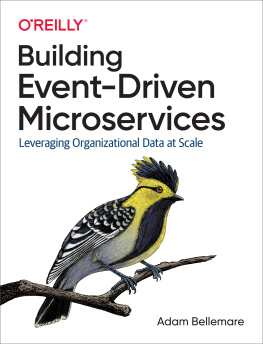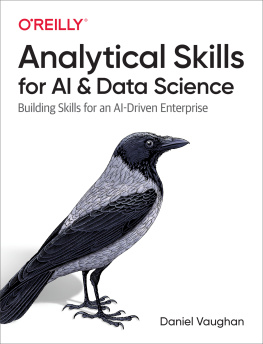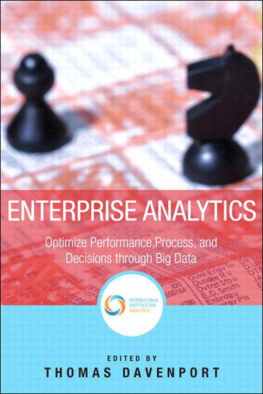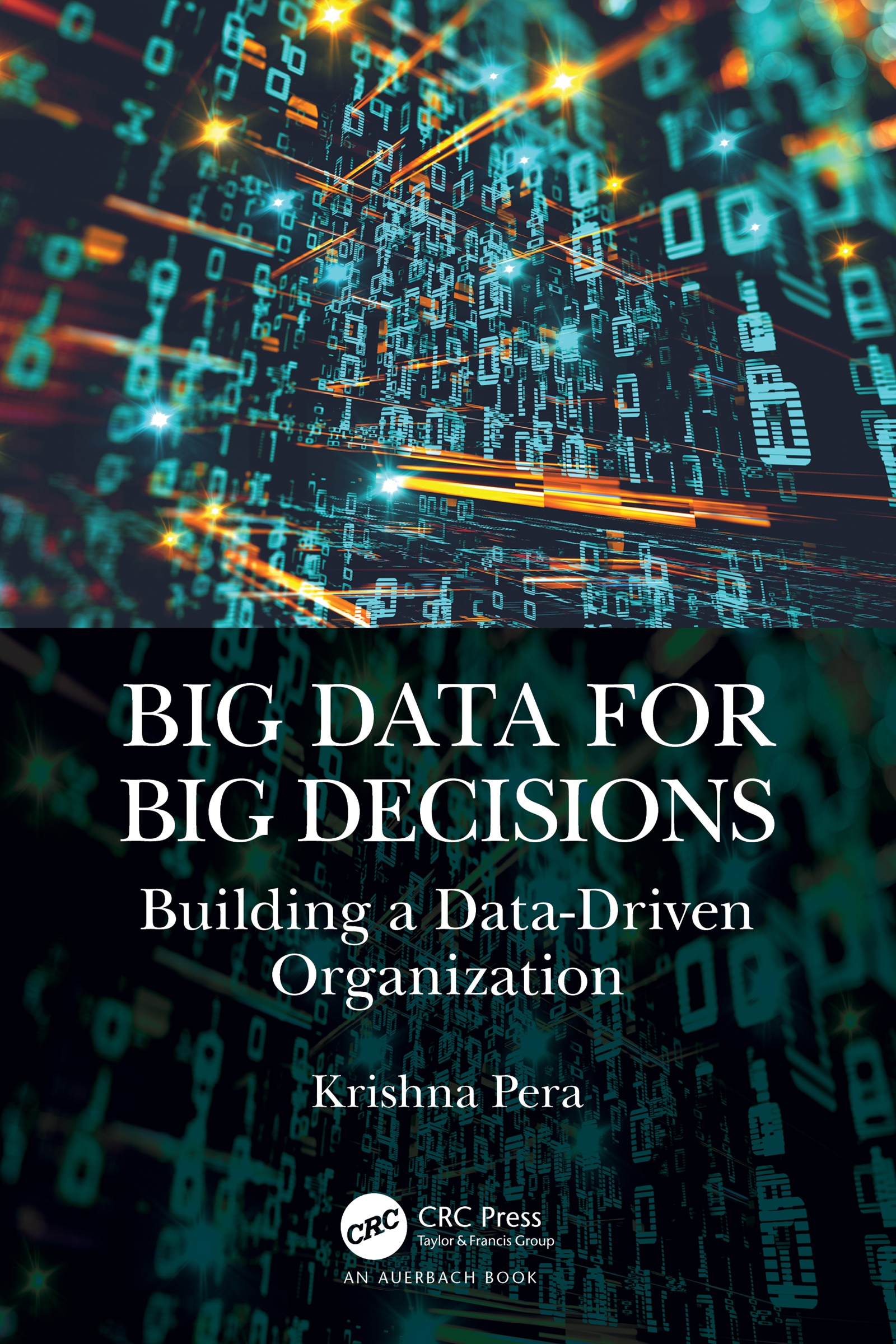
Big Data for Big Decisions
Building a data-driven organization (DDO) is an enterprise-wide initiative that may consume and lock up resources for the long term. Understandably, any organization considering such an initiative would insist on a roadmap and business case to be prepared and evaluated prior to approval. This book presents a step-by-step methodology in order to create a roadmap and business case, and provides a narration of the constraints and experiences of managers who have attempted the setting up of DDOs. The emphasis is on the big decisions the key decisions that influence 90% of business outcomes starting from decision first and reengineering the data to the decisions process-chain and data governance, so as to ensure the right data are available at the right time, every time.
Investing in artificial intelligence and data-driven decision making are now being considered a survival necessity for organizations to stay competitive. While every enterprise aspires to become 100% data-driven and every Chief Information Officer (CIO) has a budget, Gartner estimates over 80% of all analytics projects fail to deliver intended value.
Most CIOs think a data-driven organization is a distant dream, especially while they are still struggling to explain the value from analytics. They know a few isolated successes, or a one-time leveraging of big data for decision making does not make an organization data-driven. As of now, there is no precise definition for data-driven organization or what qualifies an organization to call itself data-driven. Given the hype in the market for big data, analytics and AI, every CIO has a budget for analytics, but very little clarity on where to begin or how to choose and prioritize the analytics projects. Most end up investing in a visualization platform like Tableau or QlikView, which in essence is an improved version of their BI dashboard that the organization had invested into not too long ago. The most important stakeholders, the decision-makers, are rarely kept in the loop while choosing analytics projects.
This book provides a fail-safe methodology for assured success in deriving intended value from investments into analytics. It is a practitioners handbook for creating a step-by-step transformational roadmap prioritizing the big data for the big decisions, the 10% of decisions that influence 90% of business outcomes, and delivering material improvements in the quality of decisions, as well as measurable value from analytics investments.
The acid test for a data-driven organization is when all the big decisions, especially top-level strategic decisions, are taken based on data and not on the collective gut feeling of the decision makers in the organization.
Big Data for Big Decisions Building a Data-Driven Organization
Krishna Pera

Cover image: Shutterstock.com
First edition published 2023
by CRC Press
6000 Broken Sound Parkway NW, Suite 300, Boca Raton, FL 33487-2742
and by CRC Press
4 Park Square, Milton Park, Abingdon, Oxon, OX14 4RN
CRC Press is an imprint of Taylor & Francis Group, LLC
2023 Krishna Pera
Reasonable efforts have been made to publish reliable data and information, but the author and publisher cannot assume responsibility for the validity of all materials or the consequences of their use. The author and publishers have attempted to trace the copyright holders of all material reproduced in this publication and apologize to copyright holders if permission to publish in this form has not been obtained. If any copyright material has not been acknowledged, please write and let us know so we may rectify in any future reprint.
Except as permitted under US Copyright Law, no part of this book may be reprinted, reproduced, transmitted, or utilized in any form by any electronic, mechanical, or other means, now known or hereafter invented, including photocopying, microfilming, and recording, or in any information storage or retrieval system, without written permission from the publishers.
For permission to photocopy or use material electronically from this work, access
Trademark notice: Product or corporate names may be trademarks or registered trademarks and are used only for identification and explanation without intent to infringe.
ISBN: 978-1-032-34281-8 (hbk)
ISBN: 978-1-032-01724-2 (pbk)
ISBN: 978-1-003-32134-7 (ebk)
DOI: 10.1201/9781003321347
Typeset in Garamond
by SPi Technologies India Pvt Ltd (Straive)
The case-studies and anecdotes mentioned in this book are purely fictional, or fictionalized accounts of disconnected real life experiences. Unless otherwise indicated, all the names, characters, businesses, places, events, and incidents are either the products of the authors imagination, or used in a fictitious manner. Any resemblance to organizations, or actual persons, living or dead, or actual events is purely coincidental.
Acknowledgments
This book may not have been possible without the support, encouragement, inputs, and advice from a number of highly accomplished professionals.
I would like to acknowledge the debt I owe to the following people in the USA:
- James Taylor (Author, and the leading authority on digital decisioning)
- My fellow alumni from the Indian Institute of Management (IIM), Bangalore; Sonal Singh (Principal Product Manager SS&C Intralinks at SAS), and Huzura Singh Siviya (SVP Strategy, Digital and Innovation at Wells Fargo)
- Scott Sobel (Senior Data Scientist at Voyageworks)
and to the following people in India
- Rajiv Gupta (Managing Director & Senior Partner at Boston Consulting Group)
- Sridhar Ganesh (Author, executive coach, former MD of Adrenalin eSystems Ltd. & former Director HR of Murugappa Group)
- My fellow alumni from the Indian Institute of Management (IIM), Bangalore: Abhilash Lal (Finance Consultant and Independent Director), Amardeep Lakhtakia (AI & Data Science Leader and Influencer), Dinesh Tiwari (Managing Director at Broad Peak Capital Advisors LLP), Rajbir Singh (CEO, i4 Mentors Foundation), Vasan Subramanian (Author and former CTO of Accel Partners), Vikrant Pande (Popular author & Partner at Semco Style Institute India)
- Srikanth Srinivasan (VP and Head of Membership at NASSCOM)
I would like to thank the following accomplished women-in-tech, for their inputs and first review of some of the chapters:
- Sirisha Pera (TCS), Vanipriya (Exotel), Harika T (L&T)
I would like to thank my editor at Taylor & Francis, John Wyzalek, for his guidance and patience, and the consulting editor, Nigel Wyatt.
Some of the chapters in this book are based on a series of articles published by the author in Data-Science-Central between 2016 and 2019; I would like to thank Kurt Cagle, and the editorial team at Data Science Central for their support, and more importantly for reprint permission.
And finally, I would like to thank my family for their support and for tolerating me for over 12 months while I worked on this book.
Introduction
DOI: 10.1201/9781003321347-1
Topics Covered in this Chapter
- Inception
| Context for the book |
- Data-driven organization: The stakeholders expectations
| A view of the Data-driven organization as seen from stakeholders eyes. |
- Setting up a data-driven organization: Constraints & experiences
|
Next page

